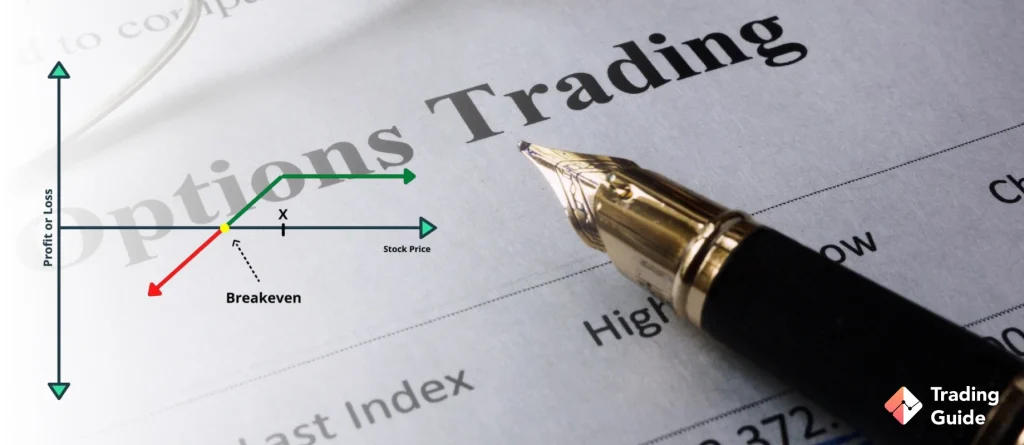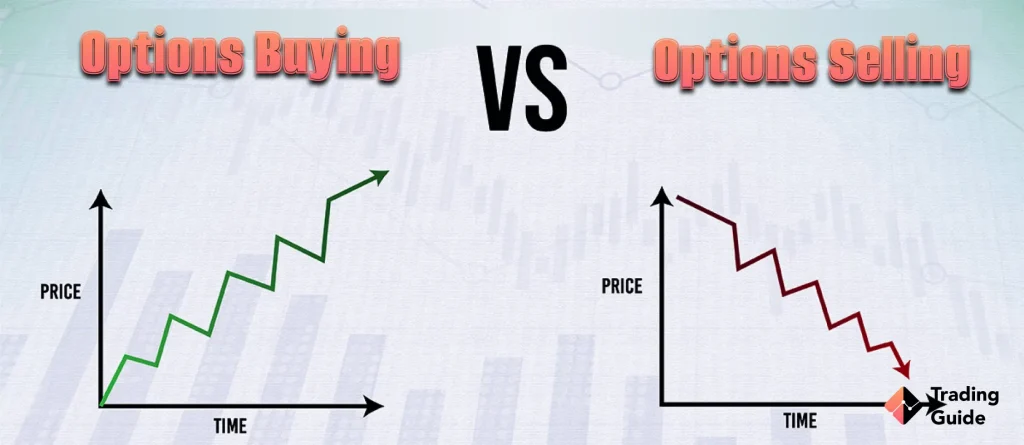As someone who has spent years studying and trading financial markets, I have come to appreciate the versatility of options. This is particularly the often-misunderstood strategy of selling put options. While many traders rush toward buying calls or puts in hopes of outsized gains, selling puts is a powerful tool. When used strategically, the activity can generate consistent income, build positions in stocks you already like, and even provide a tactical edge in volatile markets.
If you are into options trading, I have prepared this guide regarding put options. I will take you through how put options work, and how I personally approach selling puts using brokers.
What are Put Options?

A put option in trading gives the buyer the right but not the obligation to sell a stock at a predetermined price (also called the strike price) before a specific set expiry date. As the seller, you will set the terms of the contract while the buyer pays a premium to purchase the contract.
When you’re selling put options, you’re taking the opposite side of that contract. You agree to buy stock at the strike price if the buyer makes a decision to exercise their right. For that obligation, you receive the premium upfront.
How Put Options Work?
Traders can use put options in hedging or speculation. In this activity, the value of puts increases as the underlying stock price decreases and vice versa. This means that when you buy a put option, you predict the underlying stock value will decrease over the contract period. Should the activity work out as speculated or in your favour, you can exercise the put option or sell the underlying stock at a strike price.
Note that there are American-style options and European-style options, which have a slight difference when it comes to exercising their contract. In the American-style options, the put holder is free to exercise the option at any time before the expiration period lapses. However, in the European-style, options can only be exercised on the expiry date.
When it comes to selling a put option, you are predicting that an underlying stock value will increase over time or remain the same within the contract period. This means that if your prediction favours you, you get to profit off the premium that you charged the seller. However, if the asset’s market price decreases, you are obligated to buy back the option from the seller at the strike price.
Let’s take a look at some examples below for better understanding:
An investor sells a put option on Stock XYZ with a strike price of £100. He receives a premium of £5 per share. If XYZ stays above £100 until expiration, the option is not exercised, and you keep the £5 premium. However, if XYZ drops below £100, you may be obligated to buy the stock at £100, even if it’s trading lower.
The put options strategy is commonly used by investors who want to generate income from stocks they wouldn’t mind owning. It also attracts those who are comfortable with potentially buying the stock at the strike price.
Advantages of Put Options
Put options remain popular because they offer more choices in how to invest and make money. The activity provides a means to hedge risk or capitalize on price changes in underlying assets. Here are some key advantages:
- Limit Risk-Taking While Generating Capital Gains
Put options limit downside risk compared to other strategies like short-selling. For example, an investor betting on the decline of stock XYZ could buy a single put contract and limit the total downside to £500, whereas a short-seller could face unlimited losses if the stock price increases. Both strategies offer similar payoffs, but the put position caps the potential losses.
- Generate Income From the Premium
Selling puts can generate steady income, especially in a rising market. When you sell a put, you receive the premium upfront, which can be reinvested or held. If the stock stays above the strike price, the option expires worthless, and you keep the premium.
- Realize More Attractive Buy Prices
Put options can be used to buy stocks at a discount. For example, if you want to buy stock XYZ but feel it’s too expensive, you can sell a put option with a strike price lower than its current market price. If the stock falls below the strike price, you may have to buy the stock, but you’ll also keep the premium, lowering your effective purchase price.
Disadvantages
Although selling put options may have some advantages, there are a few disadvantages to consider:
- Downside Risk
If the stock price falls significantly, you could be forced to buy at a much higher rate than its present market value. Possible losses are enormous, but they are limited to the stock price falling to zero.
- Limited Upside
A reward is only in the form of the premium you earn. If the stock price rises significantly, you will not make those profits.
- Margin Requirements
Selling put options may require a margin account and sufficient collateral to back your position. Brokers usually require this so that you will be able to fulfill the obligation if assigned.
How to Sell Put Options Using a Broker
Selling put options involves several steps, and it’s essential to work with a broker that offers options trading. The best element about trading with brokers is that they have adequate collateral to enable you to afford the purchase.
Here is the step-by-step guidance to getting started.
Start by identifying an options broker that aligns with your trading requirements. Elements such as affordability, solid research tools, real-time data, reliable support, and more will ensure you find the best broker. Most importantly, confirm a broker’s regulatory status. It must be licensed and overseen by the Financial Conduct Authority (FCA) to guarantee safety and a favourable trading environment.
Most brokers require a margin account to sell put options. This means you must maintain a minimum balance or collateral. If you do not have an account, complete the procedure by clicking the register or sign up button. Fill out the available form using your personal details as requested and participate in account verification.
Once your account is fully activated, you should make a deposit per the broker’s minimum deposit requirement. Hit the “Fund my Account” option and choose a convenient payment method, whether bank transfer, credit/debit cards, or e-wallets.
Choose a stock you’re willing to own. Look for stable companies or those you believe are undervalued. Once you have identified the best option, pick a strike price and expiry date before hitting the trade button. You should also select the number of contracts you would like to purchase, considering that each represents 100 shares.
Select the sell to open order to start trading your position. Remember, monitor the position until expiry or buy to close if you want to exit early. You should also watch stock movements, market news, and implied volatility so you never miss out on any potentially profitable opportunities. You will profit if the asset’s value increases or remains the same.
Selling Put Options vs Buying Put Options

Put options can be used in two distinct ways, depending on your market outlook. This includes selling them to generate income or buying them to speculate on a price drop. These two approaches come with very different incentives, risks, and rewards.
When you sell a put option, you’re agreeing to buy the stock at a set price (the strike price) if the buyer decides to exercise the option. You’re bullish or neutral, hoping the stock price will stay the same or rise, so the option expires worthless and you keep the premium.
When you buy a put option, you’re purchasing the right to sell a stock at a set price. You’re bearish, hoping the stock price falls so the option increases in value and can be resold or exercised for a profit.
Here’s a breakdown of the two strategies:
| Selling Put Options | Buying Put Options |
|---|---|
| Investors are obligated to buy the stock at the strike price if assigned. | The market outlook is bearish, and the stock value is expected to drop below the strike price. |
| Investors can generate income from the premium. This is by buying stock at a discount. | Investors get to benefit or profit from a drop in the stock’s price. |
| Selling put options is riskier, whereby if the stock crashes, you are still obligated to buy it at the strike price. | There is no obligation here. Investors can decide whether to exercise the option or let it expire worthless. |
| Selling put options is riskier, whereby if the stock crashes, you are still obligated to buy it at a strike price. | Buying put options is limited to the premium paid. |
| The reward is limited to the premium received. | The reward can go up to the strike price minus the premium. That is, if the stock drops to zero. |
From the above table, I believe that selling and buying put options are excellent activities for traders and investors looking to generate passive income. However, you must understand where your interest lies to select a suitable option. For instance, selling put options is ideal for investors looking to own a stock or generate steady income. In contrast, buying put options is perfect for traders who like to speculate on the decline of stocks or are looking to hedge against existing positions.
FAQs
Yes. Selling put options is an excellent way to make money since it allows you to profit from an underlying asset’s increasing value before the option’s expiry date. The best element about selling put options is that you also get to keep the premium if the sold put is not exercised and expires out of the money.
It s crucial to consider the premium you are likely to receive at the end of a put option’s contract. Therefore, consider selling a put anywhere from 30-45 days of expiration to receive a substantial amount of premium.
The amount of money needed to sell puts will depend on the asset you plan to invest in. Remember, a single put option represents an underlying equity’s 100 shares. Therefore, always conduct thorough research to select affordable assets for selling put options.
You should sell put options if you are comfortable owning the underlying security at a predetermined price. With selling put options, you do not have the rights but are assuming the obligation to buy the underlying asset from the buyer of an option should they exercise the option.
Selling a put option before the expiry date will earn you a lower premium. However, you can make good profits if the asset’s value increases above the strike price.
Yes. You can sell your put option anytime within the provided trading hours. Simply be sure to earn good profits before making this decision, although the premium earned will be low.
Bottom Line
Selling put options is a strategic way of making money, building a stock portfolio, and benefiting from market declines. While risks are real, especially in volatile markets, the strategy can be suitable for self-disciplined investors seeking managed exposure.
Always trade with a plan, proper risk management, and a platform that supports your strategy. Used wisely, selling puts can turn market declines into opportunities.



